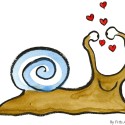This blog originally started as a guest blog for my friend Elizabeth Bachman; lately, however, I’ve been wanting to refer to the content, so I thought I’d spin it for myself.
While I’d rather write a presentation than give one, I sit through them with some regularity. And I’ve sat through some really BAD presentations. And those make for really un-clear communication.
Technology can be so much fun, so having a presentation to accompany your talk can be very alluring. And, a good PowerPoint can really enhance a talk. BUT, a bad PowerPoint can make the best of talks a total disaster!
Technical difficulties do not make a bad PowerPoint. They do, however, indicate an unprepared presenter – regardless of who’s actually responsible.
Nope, a bad PowerPoint is:
- Bland Looking
- Over-full of Content
- Too Glitzy
Bland

These days, it is actually pretty hard to find a truly bland PowerPoint. A slide with just a list of bullets devoid of color, graphics, or any sort of design is almost impossible, because PowerPoint generally doesn’t let people start from a purely blank slate. You have to work pretty hard to create one.
However, a basic template with only bullet points becomes real boring real quick.
Even for the technically klutzy, changing layouts, adding a picture, and playing with fonts and colors is simple enough.
There is really no excuse for a presentation lacking in visual stimulation.
Over-Full
This is the one that really gets me. Why bother speaking if everything is on the slide?
Content for a good slide is a maximum of seven bullet points.
- Bullet Points: No full sentences, just something to jog the memory.
- Maximum of 7 Points: And that is the ABSOLUTE MAXIMUM. If you hit 7 – including sub-bullets – you have run out of space on your slide.
When the entire talk is on the slide, you deprive the audience of you. You have a message that you are passionate enough about to get up and speak in front of groups of people! Give that message, don’t read it!
Glitzy
How many presentations have you seen where there is so much design, graphics, and/or animation that you are just dumbfounded?
Assuming the projector works, and your computer speaks to it without a problem, an over-done slide can lead to technical difficulties. We’ve all seen a mouse send a presentation in the wrong direction, skip a slide, or just not do anything. Imagine how much worse that looks when all the bling on the slide takes over your presentation.
Use PowerPoint as a tool to enhance your talk, not as an opportunity to wow the audience with your awesome skill. Those types of opportunities have a habit of not working out so well.
Random Tips
There are some basics to a presentation that I learned from doing, watching, and having a mom in marketing.
- Large Font: If the people at the back of the room can’t read it, then it is too small.
- Readable Font: I love playing with fonts, but there are really very few that I actually use. Remember, pretty does not equal readable.
- Mix Things Up: Change your slide layouts. Include pictures/graphics, but not on every slide. If you are up for it, throw in the occasional – and simple – animation.
- Good Design: You color scheme must match your brand! Keep the background noise to a minimum.
- Have Printed Notes: There are three ways to jog your memory about the content of your presentation: look at the screen, look at the computer, or look at your notes. Looking at the screen isn’t that big a deal, but can become a strain on your neck. Looking at the computer keeps you from really connecting with your audience; and it makes getting in the way of the projector really easy (they’re generally next to each other.) When you have printed notes, you can stay engaged with the audience – they know your checking whatever the method, so keep facing them. Also, if there are points you are afraid to miss, or instructions you want to give yourself, printed notes are a great place to put them!
- Proofread! How many times have you caught a typo in someone else’s presentation? Do you feel embarrassed for them? Run the spell check, run the grammar check, and re-read your presentation several hours after you’ve “finished” it. You’ll be amazed at what you catch.
-Lorrie Nicoles
#BadPresentations #PowerPoint #KeepItSimple #ClearCommunication #WordNerd

What a juicy topic, Lorrie-Powerpoint. I like your suggestions. Powerpoint is not a crutch, but a supporting prop to help you make your point.
When I remember great powerpoint presenters, at the top of my list goes Tom Peters. Many of his slides have just one word or picture, and then come his stories and passion to make the point.
A place that I find many great slide decks is slideshare.net I like looking at Barry Feldman on slideshare. He gets it with powerpoint.
I have worked at companies, big unnamed corporate F500 firms that crammed so many bullet points and words on page after page that I’d be shortly distracted, checking out something else.
Thank you for pointing out PowerPoint’s hazards. Guy Kawasaki of Apple fame suggests no more than ten pages for your show and that the point size of the type should be half the average age of your audienc: 30 point for 60 year-olds, 12 point for 24 year-olds.
Stu- Thanks for the tip. Maybe because I’m a long way from 24, but I don’t think 12 point is ever good for PowerPoint.